Tuesday, December 20, 2011
Merry Christmas and Happy New Year from Stokes
Saturday, December 17, 2011
CBC, and then a Ruffed Grouse flew up

Our view from our deck just before dusk, the birds had just about gone to bed. Time to go to the count down party.
Wednesday, December 14, 2011
Santa Wood Stork, ho-ho-ho
This is a bird that looks so beautiful in flight, not so close up, but does a good imitation of Santa.
Monday, December 12, 2011
Christmas Bird Counts are coming up
Busy, busy time for everyone right now, but don't forget the Christmas Bird Counts are about to happen. That's where birders from an area (the country is divided into count circles, each with its own count date, usually in Dec.) go out and count all the birds in that area during a 24 hr. period. Our count here in southwest NH takes place next Saturday. Birds numbers at feeders have been down, since it has been unusually warm here in New England. Birds still have plenty of wild food and no big need for the extra calories demanded by very cold temps. Some lakes and water areas are still unfrozen so there may be lingering waterfowl. We shall see what turns up, that's part of the fun of counting every bird you see on that day. For more information on how you can join a Christmas Bird Count in your area go here.
Wednesday, December 07, 2011
Ruffed Grouse
 |
| Ruffed Grouse, this photo of mine appears on page 59 of our new The Stokes Field Guide to the Birds of North America |
That's a bird you don't often see, but that doesn't mean they're not around. These grouse have a range across much of Canada, northern areas of the U.S., and down into the Appalachians. We hear them drumming in spring, a very low-pitched sound. Only occasionally do we see them fly across an open space, or, as a special treat like today, find them foraging.
Monday, December 05, 2011
Gray Catbird, where are you now?

Gray Catbirds are common breeders across much of the eastern two-thirds of the country. They winter in coastal areas of the states from about the mid-Atlantic through TX and also winter in the Caribbean and Central America. Catbirds are relatives of mockingbirds and thrashers and, like them, have the ability to mimic the sounds of other species, incorporating these sounds into their own song. Catbirds love thickets and eat insects and fruit and berries.
When we go to Sanibel, FL in winter, there are many catbirds wintering. Mainly they lay low in vegetation during the day. But just at dusk, you can hear them calling before they go to sleep for the night. Suddenly you are aware there are a lot more catbirds in the area than you knew. I look forward to that.
By the way, are any of you seeing Gray Catbirds now?
Thursday, December 01, 2011
Photographing Birds in Flight, Tips
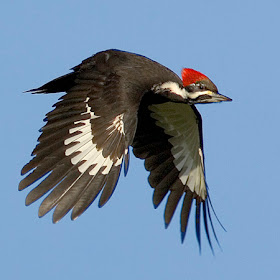
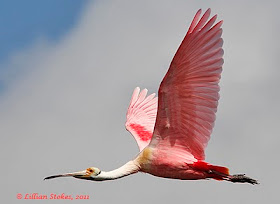
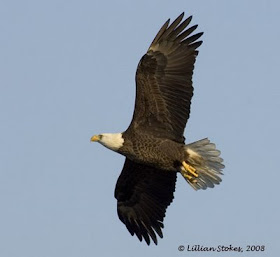
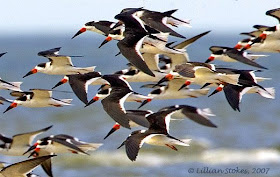
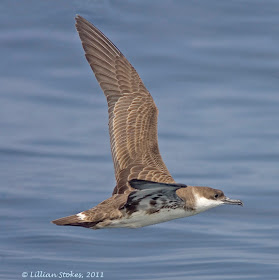
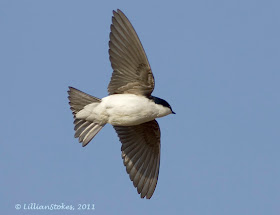
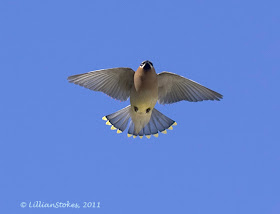
My favorite type of bird photography is photographing birds in flight. Above are a few of my photos and here are some tips.
How do photographers get such photos? Here's what you need:
- High speed digital SLR cameras like the Canon 7D, or 1D Mark IV (which I have). The faster, and the more continuous frames per second your camera will shoot, the better. Get a camera the shoots at least 5 frames per second, preferably more. Know your camera dials and settings very well. For most flight photos you need to have at least 1/500th of a second shutter speed, preferably 1/1000th or more. Set the ISO high enough to attain this shutter speed.
- Good situations for photographing birds in flight, such as open areas of water or open sky where you see birds coming from a distance and can get on them early with your auto focus, plus you will have a clear blue background. Keep the sun at your back. Try to shoot with the birds moving along a predictable flight path that is perpendicular to the front of your lens.
- Good eye-hand coordination and fast reflexes. Find the bird by spotting the bird when it is at a distance, and I mean very distant. Do not wait until the bird is close, because by then it will be moving too fast for your to get on it. After you spot it, raise your camera to your eye and lock the auto focus on the bird. Most photographers set the camera's auto focus selection point (AF point) on the center point because it is the most sensitive of the points and allows you to keep focused on the bird. Also your camera will be less likely to lock onto the background as you try and stay on the moving bird.
- A willingness to practice lots and take lots and lots of photos, only some of which will turn out. (At least with digital you are not paying for film.)
- A strong motivation and desire to take flight photos.
- The expertise and programs to process your digital photo to make it look its best. Most photographers use programs like Adobe Photoshop.
My advice is even if you don't have all or some of the above, try anyway. You might find it addictive like I do.
Most importantly, have fun!!!
Wednesday, November 30, 2011
We Garden, Also

 Border combination includes Yarrow 'Coronation Gold', honeysuckle vine, 'Gold Flame' (Lonicera heckrottii), Clematis 'Ville de Lyon' and dogwood shrub, 'Ivory Halo.'
Border combination includes Yarrow 'Coronation Gold', honeysuckle vine, 'Gold Flame' (Lonicera heckrottii), Clematis 'Ville de Lyon' and dogwood shrub, 'Ivory Halo.'In addition to being hooked on birds, and having an over 30 yr. career producing bird field guides, birding TV, and more, we also garden, avidly. Our gardens are carefully created for beauty, good design (I choose all the plant combinations), colorful plant material through the seasons, and to be bird-friendly with plants that attract our avian friends.
Tuesday, November 29, 2011
Birding for Kids


Our Stokes Beginner's Guide To Birds covers the 100 most common birds in the east or west and is organized by color of the bird so even children who cannot yet read, can look up a bird they see. The newly published, Young Birders Guide by Bill Thompson, III, is also a wonderful resource. Older kids who are already into birding should have one of the many full size birding field guides. Kids should have appropriate sized binoculars, with smaller more compact binoculars given to smaller kids, and
 full-sized binoculars for older kids.
full-sized binoculars for older kids. The Young Birders part of the American Birding Association website is an excellent resource for kids age 10-18. They have a Young Birder of the Year Contest with prizes in categories for keeping a field notebook, bird illustration, bird writing and bird photography. They also have kid's birding camps and kid's scholarships to those camps and other birding activities. A Bird's-Eye View bimonthly newsletter is edited and written by young birders.
The Young Birders part of the American Birding Association website is an excellent resource for kids age 10-18. They have a Young Birder of the Year Contest with prizes in categories for keeping a field notebook, bird illustration, bird writing and bird photography. They also have kid's birding camps and kid's scholarships to those camps and other birding activities. A Bird's-Eye View bimonthly newsletter is edited and written by young birders.Most importantly, you can help spark an interest by taking a kid birding, whether it's your own kid, a grandchild, neice, nephew or just a friend.
Monday, November 28, 2011
Tree Sparrows, subtle beauty
One of the highlights at our bird feeders now are the newly arrived American Tree Sparrows. Like the juncos, they spend the winter with us and depart in spring. We enjoy their delicate good looks and their tinkling calls, as they roam the winter landscape. They breed across upper Canada and in Alaska and are seen in winter throughout much of the country. Their central breast dot stands out on their clear breast and notice their white wing bars and yellow lower mandible, good ID clues.
American Tree Sparrows eat weed seeds and come to our feeders for millet, cracked corn and other small seeds under the feeders. We often go out in our yard with our binoculars and look at the feeders and around our property at any sparrows we see, looking closely at these subtly colored birds. The reward is discovering and identifying the many species of sparrows in fall and winter. Try it, you may be surprised at how many species of sparrows can see at your own feeders.
Thursday, November 24, 2011
Happy Thanksgiving from Lillian and Don!
Wednesday, November 23, 2011
Tuesday, November 22, 2011
Turkey photo of the day plus funny bonus photo!
 Today's Wild Turkey photo by Lillian, is on page 68 of our new The Stokes Field Guide to the Birds of North America
Today's Wild Turkey photo by Lillian, is on page 68 of our new The Stokes Field Guide to the Birds of North AmericaMonday, November 21, 2011
Baby Wild Turkey photo

Since this is the week everyone is obsessed with turkeys, I thought I would post a different photo each day of a Wild Turkey. We are lucky to have Wild Turkeys visit our property throughout the year, here in NH, and we get to enjoy seeing them at all different stages of their life cycle, from males displaying in spring, to hens with young (called poults) in summer, to winter flocks consisting of hens and young turkeys of both sexes. Males form their own winter flock.
Friday, November 18, 2011
Winter Feeder birds, bet you didn't know these things about them!

What birds can you expect at your bird feeders in winter? Quite a few, if you keep your feeders well supplied with quality bird seeds and suet. A great number of birds that breed in the U.S., such as vireos, orioles, flycatchers, hummingbirds, warblers, thrushes, and swallows, etc. migrate south for the winter. However, many birds live in the same area all year round, and other birds will come to your feeders just in winter. Here are some feeder birds that you might expect.

1. Black-capped Chickadees breed as pairs on their own territory. Come fall, they join up into flocks of about 6-10 birds or more, consisting of mated pairs and non-breeders, but not the offspring of the adult pairs. The flock remains on a winter territory of about 20 acres which they will defend from other chickadee flocks. If your feeding station is in their territory, they will visit every day. The flock has a pecking order and you can see the most dominant chickadees supplant the less dominant individuals at your feeder. Other species of birds, such as woodpeckers, titmice and kinglets, may temporarily join chickadee flocks as they move about the woods.

2. Tufted Titmice stay in family groups in the winter. The flocks move in a fixed range of about 15-20 acres. Titmice are conspicuous and vocal at feeders. Come spring, the flocks break up into breeding pairs and lone birds.
3. White-breasted Nuthatches are common feeder birds in much of the country. They stay as a pair throughout the year in a fairly fixed range of about 25-45 acres, but during breeding they claim a smaller portion of this range for a breeding territory. In winter, the ranges of nuthatches may overlap, so you may see more than one pair at your feeders. Nuthatches can climb, headfirst, down trees.


4. Downy Woodpeckers and their larger, look-alike relative, Hairy Woodpeckers, are found at feeders all across the country. They live as pairs through the year on a range of from 5-25 acres for the Downy, and from 6-8 acres for the Hairy. The ranges of neighboring woodpeckers may overlap, so you may see several pairs at your feeders, especially if you offer them suet. Woodpeckers don't sing, but communicate through drumming on resonant surfaces, like a tree trunk.

5. Northern Cardinals live on a territory of about 3-10 acres. Some live there throughout the year. Other cardinals form into flocks in winter and go where there is plentiful food. In spring, they return to their breeding territories. Both male and female cardinals sing. Listen for them in spring.

6. American Goldfinches are beautiful feeder favorites. They're bright yellow in spring and molt into a more subtle brownish-gray plumage in winter. During breeding, they live on a territory of 1/4 to1 acre or more, which they defend from other goldfinches. Once breeding is over, they form into flocks and may show up in late summer at your feeders in large numbers with their fledged young. In fall and winter, goldfinches vary in their degree of seasonal movement. Some remain in an area and others may wander widely in flocks, prompting people to wonder where the goldfinches have gone. Keep feeders stocked with sunflower and thistle to increase your chances of them visiting you in winter.

7. Dark-eyed Juncos, a kind of sparrow, are nicknamed "snow birds" because they're a species who arrive at feeders, often when the snow flies, and also because their plumage of dark gray above and white belly, looks like "gray skies above and snow below." They breed in more northern and in mountainous areas of the U.S., and in Canada, but move more south and throughout the U.S. in winter. Juncos tend to winter at the same spot each year and stay in fixed flocks with a stable dominance hierarchy. The flock forages in a defined area of about 10-12 acres, but not all of the flock members always move about together, so you may see varying numbers of juncos.

8. Mourning Doves live throughout most of the country all year. In winter, they join into flocks which can be up to 50 birds or more and feed and roost together. These flocks wander about an area as food resources change. Flocks in the northern states seem to have a higher percentage of males. The flocks may stay stable in membership through the winter. In spring, Mourning Doves will pair up and breed, defending only a small area around their nest, and will leave their nesting area to feed in a flock. Since Mourning Doves like to feed on the ground or from tray feeders, keep feeders and the ground below them shoveled of snow.































